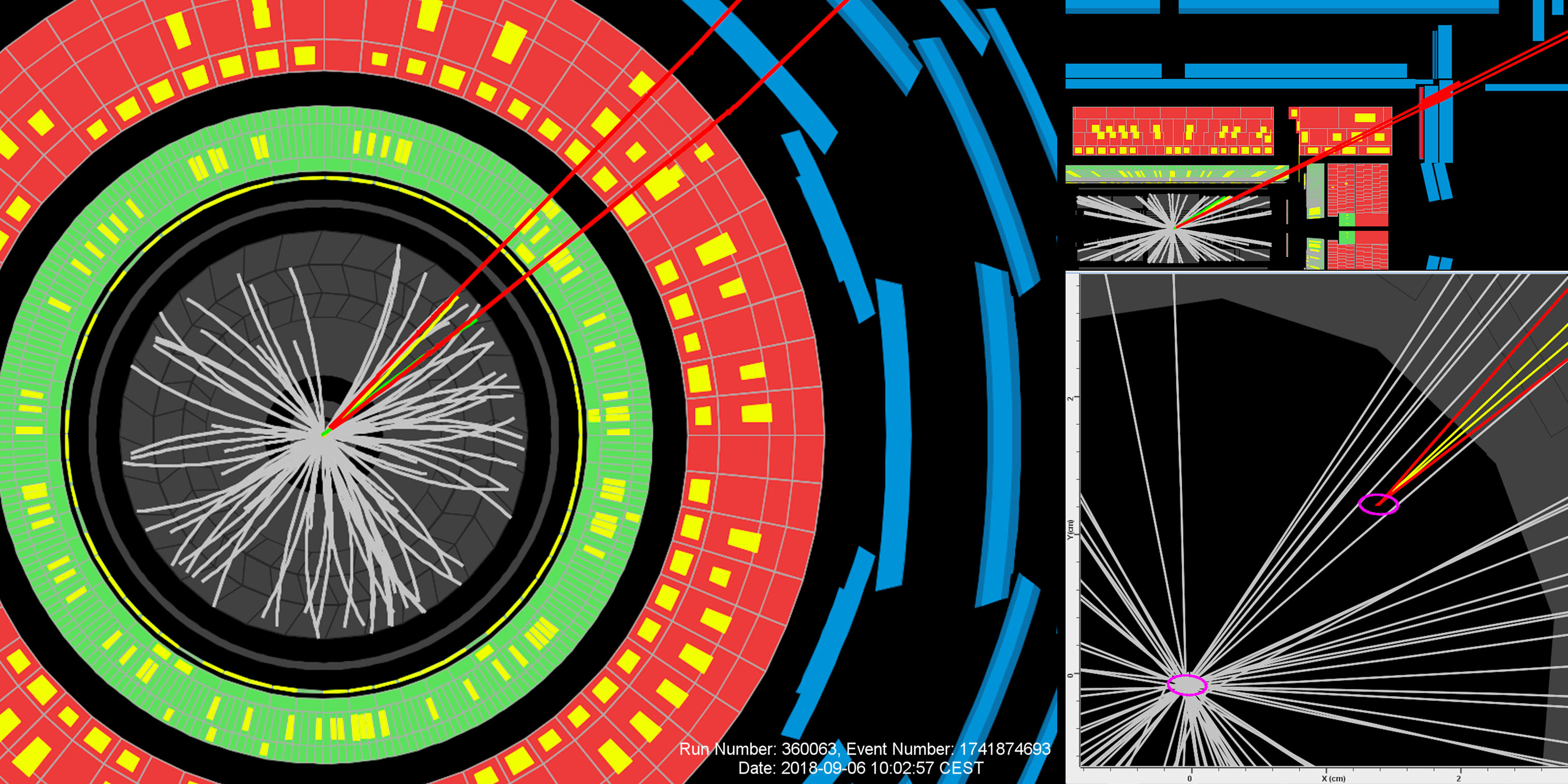The measurement of a lifetime: ATLAS releases new precision study of the B meson
25 November 2024 | By
A cornerstone of the ATLAS physics programme is the study of hadrons — composite particles made up of quarks. Investigations of hadrons not only refine the understanding of the Standard Model, but also provide excellent opportunities for discovery. Among the many hadrons in nature, B mesons are especially important to particle physicists. These particles are composite states made up of two quarks, one of which is a bottom quark (b quark). Over the past decades, by studying B mesons, physicists have been able to examine rare and precisely predicted phenomena to gain valuable insights into weak-force interactions and heavy-quark dynamics.
Last week, the ATLAS Collaboration announced a new high-precision measurement of the lifetime of the B0 meson. The B0 meson is composed of a bottom antiquark and a down quark. Measurements of its lifetime – the average time it exists before decaying – provide an exceptional probe of physics processes beyond the Standard Model.
Measurements of the B0 lifetime – the average time the particle exists before decaying – provide an exceptional probe of physics processes beyond the Standard Model.

The new ATLAS analysis looked at the decay of the B0 meson into an excited neutral kaon (K*0) and a J/ψ meson. The J/ψ meson subsequently decays into a pair of muons while the K*0 meson is studied through its decay into a charged pion and kaon. Researchers analysed data collected during Run 2 of the LHC (2015–2018), amounting to an impressive dataset of 140 fb-1. Their analysis benefited greatly from detector upgrades implemented for Run 2, including the installation of the insertable B-layer (IBL) in the inner tracking detector, which provided enhanced vertex precision and led to an improved time resolution. The large Run-2 dataset recorded also enabled physicists to more precisely model the decay process.
ATLAS physicists measured the B0 meson lifetime to be τ = 1.5053 ± 0.0012 (stat.) ± 0.0035 (syst.) ps. This result significantly improves upon previous lifetime measurements, including those from ATLAS and other experiments (see Figure 1). Achieving this accuracy required the analysis team addressing various systematic uncertainties, including those arising from detector alignment, selection criteria, and different trigger and data-taking conditions. Each uncertainty source was evaluated through alternative fit models and consistency checks across the data-taking years.
In addition to the lifetime measurement, researchers calculated the decay “width” of the B0 meson. Width is a fundamental parameter of any unstable particle with a finite lifetime – the shorter the lifetime, the broader the decay width. The decay width (Γd) of the B0 meson was measured to be Γd = 0.664 ± 0.004 (total) ps-1. Physicists then compared this result to a previous measurement of the decay width of the Bs0 meson (composed of a bottom quark and a strange quark). They found that the ratio of the decay widths was consistent with unity, reflecting the close values of measured widths. These measurements are consistent with different theoretical approaches to heavy-quark physics and can be used to further tune these models.
This latest analysis by the ATLAS Collaboration enhances the understanding of weak decays in the Standard Model and provides valuable data for future theoretical developments. Such precision measurements also serve as benchmarks for the search for physics beyond the Standard Model by offering reference points against which to search for potential deviations.
Learn more
- Precision measurement of the B0 meson lifetime using B0→J/ψK*0 decays with the ATLAS detector (arXiv:2411.09962, see figures)
- Measurement of the ϕs-violating phase in B0s→J/ψϕ decays in ATLAS at 13 TeV (Eur. Phys. J. C 81 (2021) 342, arXiv:2001.07115, see figures)
- LHC Seminar by Maria Smizanska: A new high-precision measurement of the B0 meson lifetime at the ATLAS experiment




